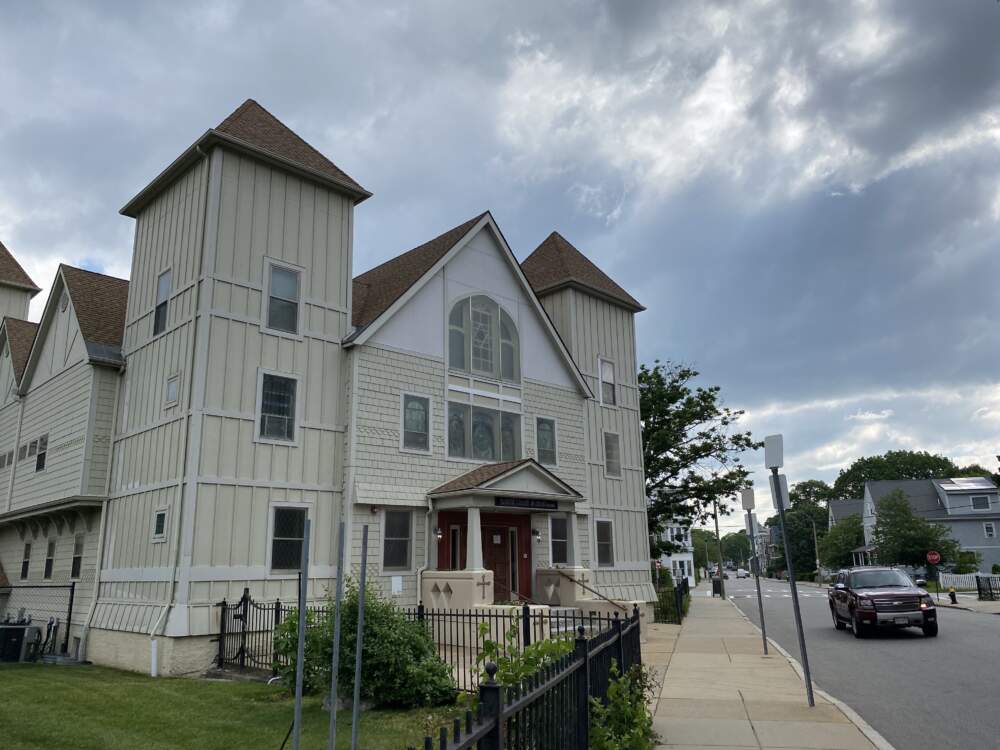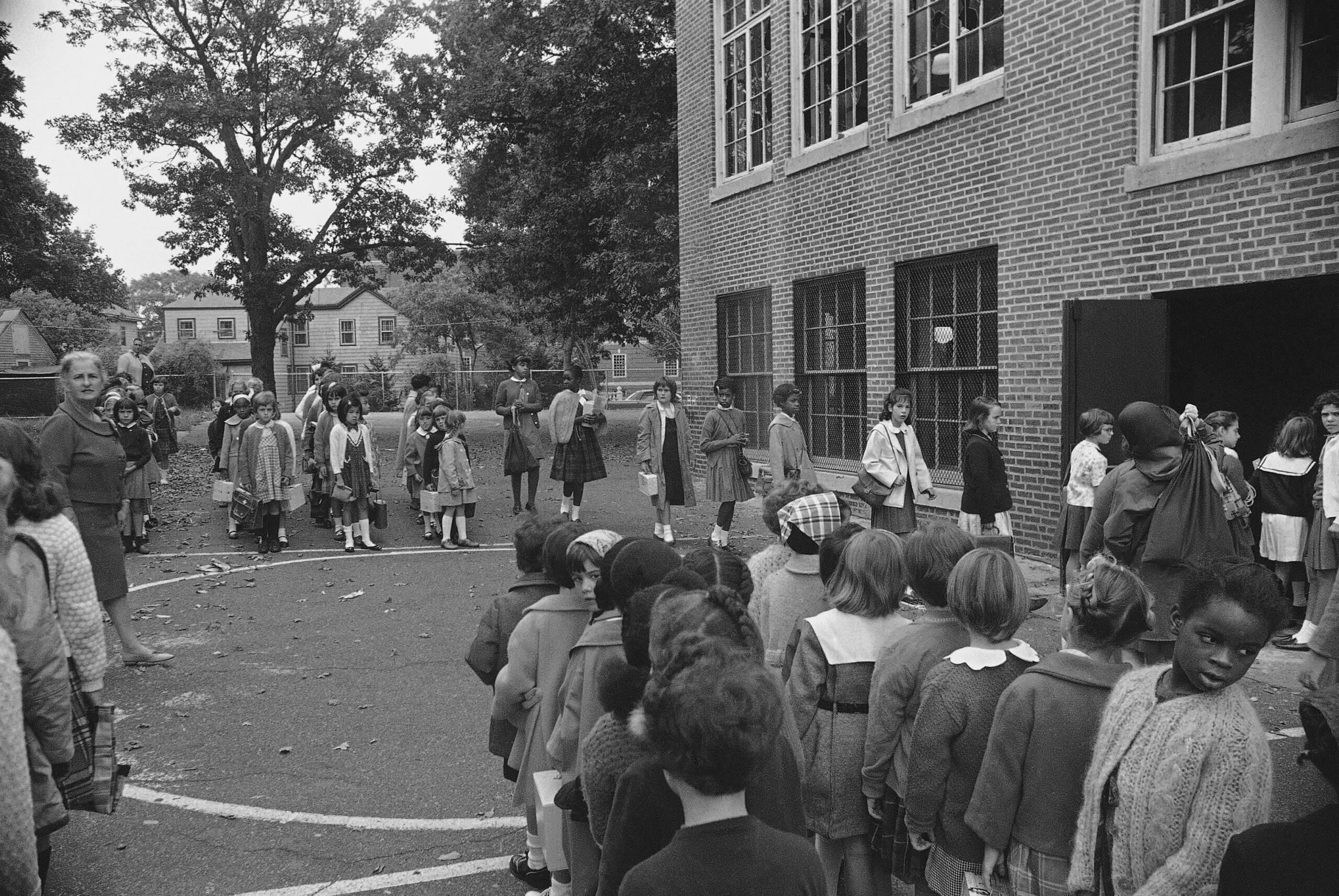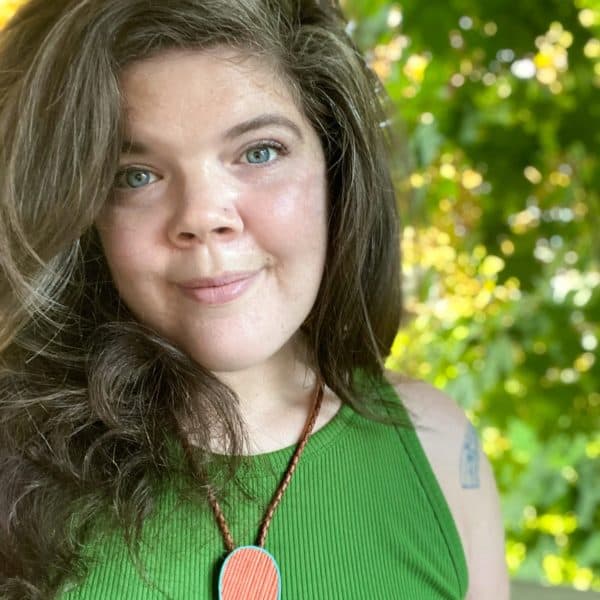Advertisement
Hidden History
How a more than 50-year-old housing policy displaced a former Jewish neighborhood in Mattapan
Resume
An area south of Boston, from Mattapan Square to Franklin Park, used to be home to a thriving Jewish community. But over the course of four years - between 1968 and 1971 - an area that was 90-percent Jewish became 90-percent Black and African American. The shift is a tale of what happens when good intentioned housing policies are left unchecked. We look at that history with two housing historians.
Lew Finfer, director of the Massachusetts Action for Justice, and Jim Vrabel, author of A People's History of the New Boston joined WBUR's Simón Rios to discuss.
Interview Highlights
On life in Mattapan in the mid 1960s:
Finfer: "Well, it was very vibrant and people used to talk about the wall at Franklin Field — Franklin Field is a big park in Dorchester and that area and has a wall that you can sit on and how people of all ages would gather in groups — it was a huge park. There was a huge wall. So the teenagers of 13 to 15 were in this group. And the teenagers, you know, 15 to 20... And they went on to the elderly gatherings. It was all there. And there were settlement houses — the Lena Park Community Center was called the Hecht House and was a settlement house recreation area. There were lots and lots of temples and, you know, all kinds of shops, you know, like kosher butchers and all those kind of things that went with that kind of life. It wasn't 100-percent Jewish, but it was probably about two-thirds Jewish in those areas of Mattapan and what I would call western Dorchester, that's like Franklin Field, Franklin Park kinds of areas."
On the Boston Banks Urban Renewal Group (BBURG):
Vrabel: "It was part of a time when government decided that cities needed rebuilding and they wanted big ideas. The federal government was putting a lot of money into helping cities, and local politicians wanted to have something to run on and have big ideas and big programs. The assassination of Martin Luther King in 1968 was what got BBURG restarted. It was actually conceived in 1961, but somehow got lost in the shuffle of urban renewal and was never enacted. But Kevin White, as mayor in '68, needed something to show the minority community that he was listening and that he was doing something, and dusted off BBURG and made a quick announcement and quickly implemented the program. And it turned out probably too quickly."
"It should be noted that not only did the original homeowners leave Boston, but the new homers came in. Half of them within five years, had those mortgages foreclosed on and lost their homes. They weren't set up for success."
Jim Vrabel
On redlining and blockbusting in the Mattapan neighborhood:
Finfer: "So this goes back to the Housing Act of 1968, a federal law that outlawed housing discrimination for the first time. Before that, the guidelines of the federal government in housing had phrases in it like 'maintain homogeneous neighborhoods.' And then with this change, African-Americans could get mortgages, but they were restricted by the redlining, by the banks, that they could only get the mortgages in parts of Dorchester and Mattapan. They couldn't go to Hyde Park. They couldn't go to Quincy. They couldn't go to Newton — just in those places. And then 12 real estate firms opened offices around the corner of Morton and Blue Hill, in that area, and they started soliciting."
"Blockbusting means realtors solicit sales and use fear to increase the sales. So they sent letters, they dropped fliers, they knocked on doors — all those practices to encourage people to sell. And then it says in the article ['Confessions of a Blockbuster'] things that people had heard about. They sat there and brainstormed a story, the kinds of stories that would scare people. One of the stories they used was we're going to say to this homeowner, 'Oh, this family's moving across the street from you, and a Black family with six kids is going to move in and their oldest son raped a white woman and he's getting out of Walpole Prison in three months. Do you want to live across the street from him?' And it worked."
On how the era of blockbusting in Mattapan delivers us into the period of bussing and beyond:
Vrabel: "I'd like to give credit first to Hillel Levine and Lawrence Harmon for the book they wrote, The Death of a Jewish Community. It's a great book. And the subtitle is 'A Tragedy of Good Intentions.' And BBURG and bussing can be seen as very similar. This is a public policy. The city was involved in this. It wasn't just the banks. It wasn't just the realtors. It wasn't just the private sector. The city was involved. And because it was involved, it had a responsibility to make sure that the details of public policy were correct, that they paid attention to how people lived and could anticipate outcomes. The idea of dumping this much mortgage money into one small area for a certain group — first time African-American homeowners — had the effect of setting all this off: the panic selling, the blockbusting, the violence, the rage, and eventually driving one group out of the city, replacing it with another."
"It should be noted that not only did the original homeowners leave Boston, but the new homers came in. Half of them within five years, had those mortgages foreclosed on and lost their homes. They weren't set up for success. They weren't screened very well. Just like the recent mortgage scandals we've had across the country. And they weren't given home repair loans because they weren't federally subsidized as the mortgages were. So the design of the program was wrong and it could have been foreseen to be wrong."

"Similarly, with bussing, the idea of — for good intention — for integrating the schools and well, for desegregating the schools, a plan was drawn up, but the plan was not sold to the community, did not heed community wishes, did not try to preserve ways of life, and people responded en masse by leaving Boston — 30,000 of the children were taken out of the Boston Public Schools within five years, and most of them and their parents left the city. So the details of public policy really matter."
This segment aired on June 14, 2023.

